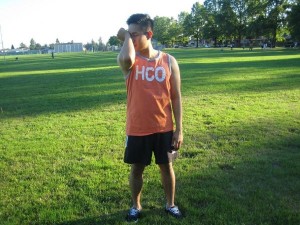Recurrent corneal erosion is a painful eye disorder.The cornea is the transparent, protective covering the front of the eye. It protects the iris, the colored part of the eye, and the pupil, the black circle in the middle of the eye. The outermost layer of the cornea is comprised of epithelial cells and beneath is the Bowman’s layer. When the epithelium does not stay attached to the basement layer beneath it, this is called cornea erosion. When the problem reappears every so often, it is called recurrent corneal erosion. Sometimes, it can recur as often as twice or thrice a week.
Symptoms of Recurrent Corneal Erosion
The symptoms of corneal erosion are usually evident, thus one can easily decide when it might be the time to seek an ophthalmologist (eye doctor). Symptoms include:
- Recurring ocular pain, ranging from mild to severe
- Most often painful in the morning upon waking up due to the drying of eyes at night or at night
- Foreign sensation in the eye (sandy, gritty feeling)
- Watery eyes or tearing
- Eye redness
- Uncontrollable blinking
- Photophobia (sensitivity to bright lights)
- Blurred vision
- Dryness
- Corneal abrasion
Risk Factors for Recurrent Corneal Erosion
Although it is not impossible for corneal erosion to occur spontaneously, certain situations predisposes this condition, such as:
- History of eye injury, such as corneal abrasion (most common) and burns to the eyes
- Dry eye syndrome
- Corneal disease, such as corneal dystrophy (granular dystrophy, lattice dystrophy, etc.)
- Ulcer of the eye, such as herpes simplex infection
- Ill-fitted or improper care of contact lenses
Treatment for Recurrent Corneal Erosion
An examination with a slit lamp will be done by the ophthalmologist will usually determine if there is recurrent corneal erosion, wherein the degree of urgency is dependent upon the intensity of pain. This treatment will be prescribed by the ophthalmologist and do not attempt to diagnose by one’s self.
- Cycloplegic eye drops may be given to briefly paralyze the muscle spasms causing pain to the eye.
- During the day, to keep the eyes moist, artificial tears are recommended four times a day.
- A lubricating ointment may be put before bedtime to avoid the eyelid from sticking to the epithelium.
- To protect the eye from further damage, a special type of contact lens or an eye patch may be used as bandage.
- If necessary, antibiotics may also be prescribed to prevent obtaining infections.
- If recurrent corneal erosions persist, surgery may be needed to promote the healing of the epithelium.
It is important to know the dangers of trauma to the eyes, specifically those that can be avoided such as corneal abrasion, to avoid the recurrent corneal erosion. Recurrent corneal erosion usually manifests within days or weeks after corneal abrasion. Applying first aid, preferably from first aid training, will help treat corneal abrasion and hopefully, avoid recurrent corneal erosion.

